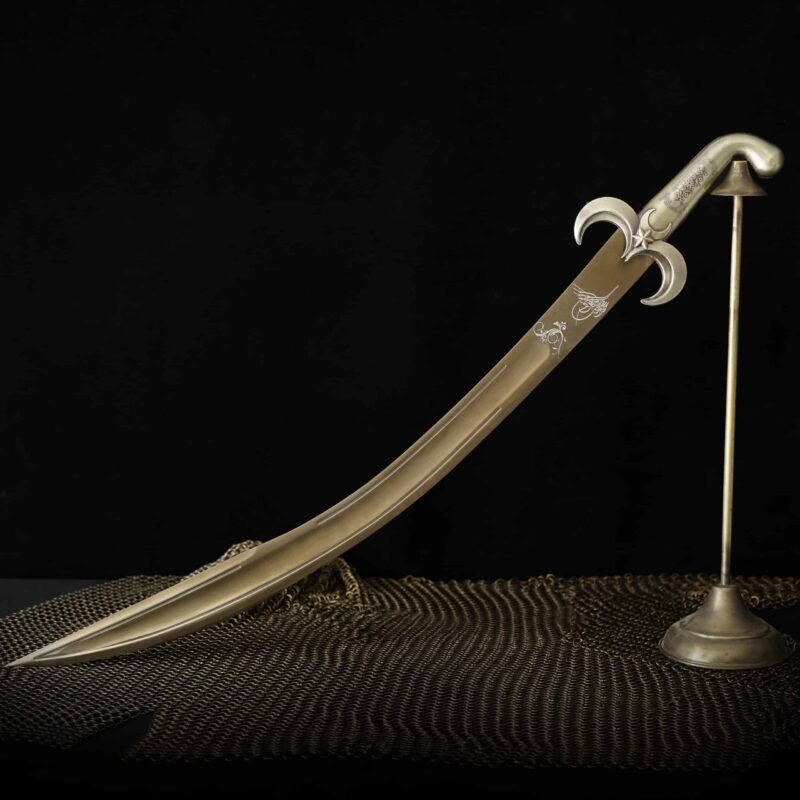How to Maintain a Handmade Sword?
It’s not just about maintaining a sword, but also about honoring art and history. Knowing how to care for your sword, whether you’re a martial arts enthusiast, collector, or collector, will help it remain in pristine condition for many generations. We’ll dive into the steps you need to take to keep your sword sharp and shining. in this article how to maintain a handmade sword we will cover this topic
You may be interested in this article. How Master Craftsmen Create Iconic Swords
Understanding Your Sword
Handmade Sword Types
Handmade swords are available in many forms, ranging from the elegant broadsword to the robust katana. Knowing the origin and design of your sword is important because each type needs special care.
Materials Used
Your sword’s maintenance requirements are affected by the materials it is made of, whether high-carbon, stainless, or Damascus. For example, high-carbon steel is more susceptible to rust and requires more care.
Initial inspection
Checking for Damages
Check your sword for visible damage before you begin any maintenance. Check for rust, nicks or loose fittings. Early attention to these problems can help prevent larger issues in the future.
Assessment of the Blade
Examine the blade in good lighting. Look for signs of wear. The edge should be even and smooth, with no dents or cracks.
Cleaning your Sword
Cleaning Supplies Required
Use a microfiber towel, cotton swabs and rubbing alcohol. You can also use a mild cleaner. Avoid harsh chemicals which can damage metals or handles.
Cleaning Process Step by Step
- Wipe down the blade: Use dry microfiber cloths to remove dust and dirt.
- Cleanser: Wet a soft cloth lightly with rubbing alcohol, and wipe the blade gently.
- Detail cleaning: Use cotton pads for difficult-to-reach places.
- Thoroughly Dry: Make sure the blade is completely dried before continuing.
Oil and Lubrication
How to Choose the Right Oil
The best oil to use is choji oil (a mixture of mineral oil with clove oil). It keeps the blades smooth and prevents rust.
How To Apply Oil Correctly
Rub a little oil on a soft cloth. It is enough to apply a thin layer of oil. Too much oil will attract dust and other debris.
Polishing a Blade
Tools to Polish
You will need a polishing kit that includes a variety of grits or stones, as well as polishing paste.
Techniques of Polishing
To remove imperfections, start with coarser grit. Gradually move on to finer grits to achieve a mirror finish. Use even, smooth strokes all along the blade.
Storage and Handling
Proper Handling Techniques
Handle your sword using the handle and not the blade. This will prevent oils and moisture on your hands from corroding the sword.
Ideal storage conditions
Keep your sword cool and dry. You can control humidity with a wooden scabbard, or a display box containing silica gel.
Sharpening your Sword
Sharpen
Sharpening is best done sparingly. Sharpen the blade if it feels dull or struggles to cut.
Sharpening Tools
It is best to use a whetstone, or hire a professional sharpening company. Sharpen the edge at the right angle by following the original.
How to Prevent Rust
Rust Prevention Guidelines
The key to proper storage and regular lubrication is the use of a lightly oiled cloth. After each use, wipe the blade with a cloth lightly oiled.
What To Do If Rust Appear
If rust is visible, rub the area gently with a towel soaked in vinegar. Continue with a thorough cleaning and oiling.
Handle Care
Handles made of Material
Handles are made of wood, leather or synthetic materials. To maintain each, it is necessary to take specific measures.
Cleaning Tips
Use a soft wood cleaner with a cloth for wood. Leather handles can also be cleaned using leather cleaner and conditioner. Synthetic handles usually only require a wipe down with a damp rag.
Maintenance of the Scabbard
Scabbards Types
Scabbards are made of wood, leather or metal. Each type of Scabbard requires a different cleaning technique.
Scabbard Care Techniques
Wooden scabbards need to be dried and polished occasionally. Leather scabbards can be conditioned, while metal scabbards should be checked for corrosion.
Schedule of Regular Maintenance
Weekly, Daily and Monthly Tasks
- Everyday: After using the blade, wipe it clean.
- Weekly: Check for signs of rust or damage.
- Every month: Cleanse and oil the blade thoroughly.
How to create a maintenance log
Keep a record of all your maintenance activities to ensure that you are taking care of them regularly. Notate dates and actions.
Avoid these Common Mistakes
Cleaning Mistakes
Avoid using any abrasive cloths or cleaners which can scratch the blade. Never immerse the blade in water.
Storage Errors
Do not store your sword in an environment that is damp or in a scabbard without checking the moisture.
Professional Maintenance
When to seek professional help
You should seek professional help if your sword is damaged or needs sharpening.
Find a Sword Maintenance Expert
You can find specialists in martial arts groups, historical reenactment societies, and online communities.
Conclusion
It takes a lot of work to maintain a handmade blade. This will preserve its beauty and function. To keep your blade in perfect condition, you need to regularly clean, oil, and store it properly. Follow these steps to ensure that your sword will remain a treasured piece for many years.






